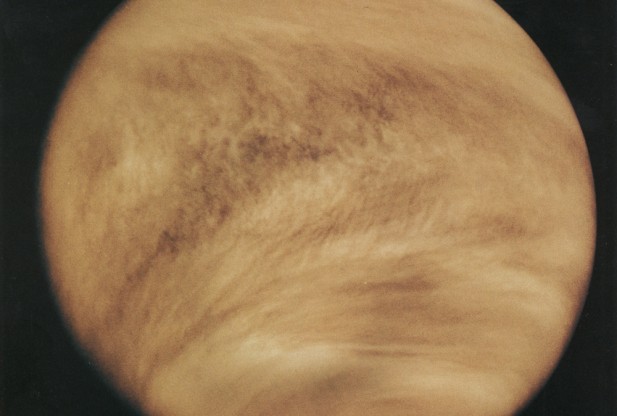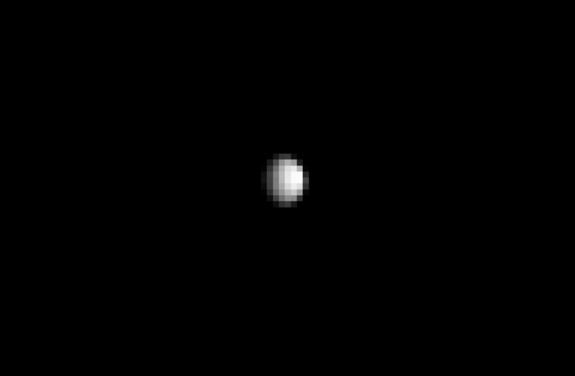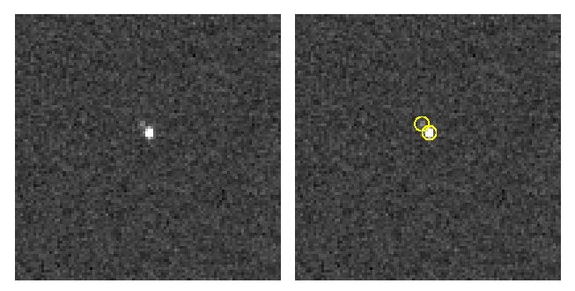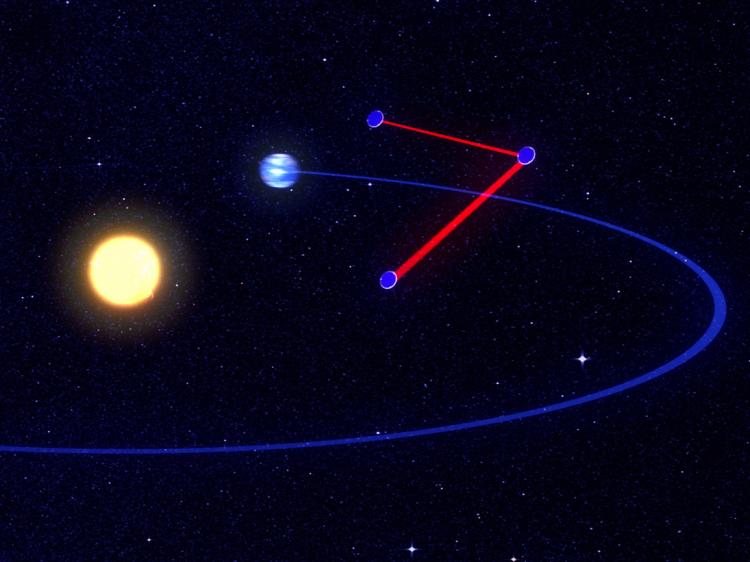January 18, 2015 – This is going to be an interesting year for Deep Space exploration. Here are three missions that will achieve significant objectives and milestones in 2015:
Dawn visits Ceres
The asteroid explorer Dawn having visited Vesta back in 2011-12, is quickly approaching the largest object in the Asteroid Belt, the dwarf planet, Ceres. Ceres is the only asteroid that is spherical in shape. It is described by Dawn mission scientists as a complete mystery. Dawn will enter into orbit around Ceres beginning March 6th and will study it for more than a year.
Back in December Dawn took a snapshot of distant Ceres. That highly pixilated image appears below. We have better images from the Hubble Space Telescope but over the next two months we will see Ceres as we have never viewed it before.
Astronomers note that the Texas-sized dwarf planet is largely composed of water ice and on its surface may even have deposits of organic molecules, the building blocks of life. Others suspect a subterranean ocean beneath the icy surface with the potential for life there as well.
New Horizons Reaches Pluto
In July the New Horizons spacecraft will make its closest approach to Pluto. An eight year journey to what was once classified as the ninth planet, but now is relegated to dwarf-planet status, should unlock its mysteries. Pluto, like Ceres, remains a mystery. We know some things about it from spectral observations here on Earth. For example we know it has an atmosphere largely composed of nitrogen. And with an atmosphere we know that Pluto rotates and experiences seasonal changes. Scientists expect to observe the frost cycle, with nitrogen ice sublimating into gas in response to the Sun, as the spacecraft trains its instrumentation for several months both pre and post fly by.
New Horizons will be approaching Pluto at a time when it is moving further from the Sun in its orbital path. At the same time the northern pole of the dwarf planet will be receiving the majority of the Sun’s energy. That should produce some interesting atmospheric dynamics.
From May on we will begin to see pictures of Pluto, Charon and its other four companion moons with clarity far greater than anything seen from Hubble or Earth-based telescopes. And by July the pictures and data we receive should amaze us in the same way the Voyagers did back in the 1970s revealing to us Jupiter, Saturn, Uranus and Neptune.
What Pluto looks like right now from New Horizons can be seen in the image below. Not much to see as of yet but you can detect Charon just to the left.
Akatsuki Visits Venus
The Japanese spacecraft, Akatsuki, will be the first probe from that country to enter orbit around Venus. This should happen sometime in November.
Back in 2010 Akatsuki attempted an orbit-insertion burn on passing Venus but its main engines failed. But the Japanese space agency, JAXA, found a way to use the thrusters on the spacecraft to set up this eventual rendezvous. First they fired them to adjust the spacecraft’s trajectory to create a second rendezvous. With that success they are confident that a second firing of the thrusters will put Akatsuki into a week-long elliptical orbit around Venus.
The orbiter mission will focus on studying the planet’s atmospheric circulation. Instrumentation includes ultraviolet and infrared imaging, lightning detection and a high-speed imager.
eLISA to Study Gravity Waves
The European Space Agency will launch sometime in 2015, the Evolved Laser Interferometer Space Antenna (eLISA). It will be the first combination spacecraft deployed to study gravity waves. Using a laser interferometer a trio of spacecraft, a mother ship and two daughters, hopes to discover the sources of gravity waves and measure them.
First theorized by Albert Einstein, gravity waves made the headlines recently when physicists announced back in March 2014 that they had discovered the first images of ripples in the Universe, gravity waves resulting from the Big Bang, a proof of Einstein’s theory.
Gravity waves are unlike any other type of waves we know. They distort space time by fractionally changing the distance between two objects. eLISA instrumentation will measure tiny changes in distance between objects in free fall within and between the three spacecraft as gravity waves impact them. Spaced 1 million kilometers (620,000 miles) apart in an equilateral triangulation, they will be connected through a high precision interferometer.












